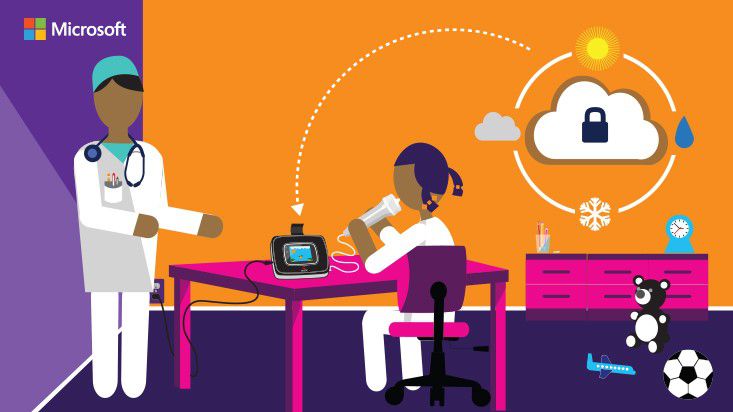Analyze this!

Many millions of dollars are being spent by hospitals around the world on health IT systems to digitize patient information and automate clinical workflows. In many countries such modernization is required as part of healthcare reform legislation. At the same time, the use of sensors, wearables, and devices is increasing at a rapid rate. All of this is driving the exponential growth of data in healthcare. In fact, according to IDC, the healthcare digital universe as they call it, is increasing by 48 percent annually.
So today the hottest topic in health is: How can we use the data being collected in a meaningful way to help individual patients and improve population health? Not surprisingly, there’s a lot of excitement around analytics, especially now that cloud computing, the Internet of Things, and machine learning offer new ways to gain insight into big data.
And we’re only just at the beginning of the data insights journey for healthcare.
Today, health organizations are applying predictive analytics to clinical data to prevent adverse events, and reduce hospital readmissions and hospital-acquired infections. As I’ve written before, easy-to-use self-service tools put powerful insights at the fingertips of everyone. For example, Carolinas Health case managers used predictive analytics to identify high-risk patients and apply over 125,000 interventions in just one year to help prevent readmissions. Hear how from Dr. Jean Wright, Chief Innovation Officer at Carolinas Health, in this video.
The next step on the healthcare analytics journey is taking advantage of machine learning to go beyond clinical data and combine information from the growing number of data sources so we can get even smarter about predicting not only individual outcomes, but also big-picture trends in population health.
Health organizations like Helse Vest, the largest health authority in Norway, are already doing this. It’s combining weather data with clinical data to predict previously unrecognized patterns and its effect on people with chronic diseases. For example, does cold weather affect people with diabetes in ways that we weren’t aware of? Being able to combine and analyze data in this way is opening doors to new answers and insights in health.
Another example of going beyond analyzing data from clinical systems alone is analyzing data from the devices patients rely on to monitor and improve their health. Case in point: Millions of asthma sufferers worldwide depend on Aerocrine monitoring devices to diagnose and treat their disease effectively. But the devices are sensitive to small changes in ambient environment. So Aerocrine is using a cloud analytics solution to boost reliability. As a result, the company can see data from the devices in real time. This helps Aerocrine relay valuable information from their customer service team to the end users on the fly and predict when consumable sensors will need to be replenished. All this enhances the device quality, user experience, and Aerocrine’s business model.
If this is how far we’ve come in the relatively short time that machine learning has been on the docket as a commoditized service, imagine where we’re going to be in 10 years’ time. Think of all the possibilities for how we’ll be able to use new insights from combined data to affect behavioral change at an individual and systemic level. I couldn’t be more excited about what the future holds.
Have a comment or opinion on this post or a question for the author? Please send us an email or let us know on Facebook or via Twitter.




